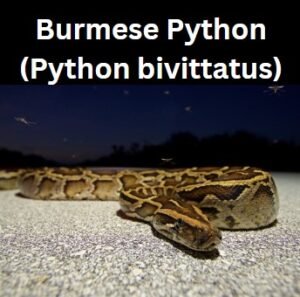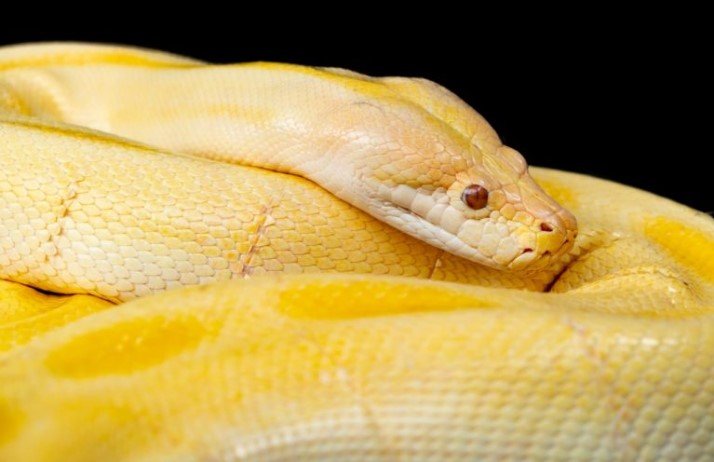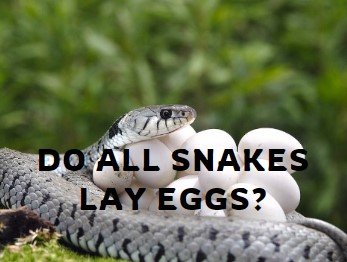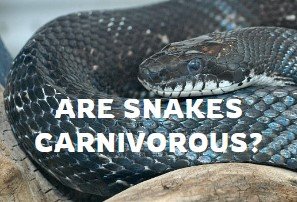Introduction
Coiled in the lush landscapes of Southeast Asia, the Burmese Python (Python bivittatus) weaves a story of mesmerizing proportions. This colossal snake, with its remarkable size, intricate behaviors, and fascinating adaptations, stands as a symbol of the region’s rich biodiversity. Join us on a journey to explore the characteristics and behaviors that make the Burmese Python a creature of awe and wonder.

Overview of the Burmese Python
Taxonomy and Scientific Classification
The Burmese Python, scientifically known as Python bivittatus, belongs to the family Pythonidae. Renowned for its robust build and distinctive patterns, it shares common ancestry with other python species, each possessing unique features within this diverse family.
Physical Characteristics and Color Variations
Characterized by a sturdy body and intricate patterns, the Burmese Python exhibits a range of color variations, including shades of brown, tan, and gold. Dark, irregular blotches adorn its body, creating a striking visual display. Understanding these physical characteristics provides insights into the snake’s adaptations and behaviors.
Geographic Distribution and Preferred Habitats
Native to Southeast Asia, the Burmese Python thrives in a variety of habitats, including tropical forests, grasslands, and marshes. Its adaptability to different environments contributes to the widespread distribution of this species across countries such as Myanmar, Thailand, and Indonesia.
Size and Growth Patterns
Impressive Size and Comparison with Other Python Species
Among the largest snake species globally, the Burmese Python can reach lengths of over 20 feet, with some individuals surpassing 25 feet. This places it in the league of the giants within the python family, captivating enthusiasts and researchers alike.
Rapid Growth During the Early Years
Burmese Pythons exhibit rapid growth during their early years, fueled by a voracious appetite for small mammals and birds. This growth is essential for their survival and eventual dominance as apex predators in their ecosystems.
Factors Influencing the Growth of Burmese Pythons
Several factors influence the growth patterns of Burmese Pythons, including genetics, environmental conditions, and the availability of prey. Understanding these factors provides valuable insights into the ecology and life history of this remarkable species.
Constricting Abilities and Feeding Behaviors
Mechanism of Constriction and Subduing Prey
The Burmese Python employs a powerful constriction mechanism to subdue its prey. By coiling its muscular body around the victim, the snake applies pressure, immobilizing and ultimately asphyxiating the prey. This effective hunting strategy showcases the adaptability and efficiency of the python’s predatory behavior.
Varied Diet and Hunting Strategies
Burmese Pythons have a diverse diet, encompassing small mammals, birds, and occasionally larger prey. Their hunting strategies involve both ambush techniques and active searching, demonstrating versatility in adapting to different prey items and environmental conditions.
Role in Maintaining Ecological Balance
As apex predators, Burmese Pythons play a vital role in regulating prey populations within their habitats. By controlling the abundance of small mammals and birds, they contribute to the overall health and balance of the ecosystems they inhabit.
Human Perspectives and Conservation
Human Interactions and Perceptions
Interactions between humans and Burmese Pythons have varied, influenced by cultural perspectives and occasional conflicts. While revered in some cultures, these pythons are sometimes viewed with fear due to their size. Responsible coexistence involves understanding their behaviors and implementing measures to mitigate potential conflicts.
Conservation Status and Threats
Burmese Pythons face threats to their populations, including habitat loss, illegal pet trade, and potential persecution. Understanding these threats is crucial for formulating effective conservation strategies to protect this iconic species and the ecosystems it inhabits.
Conservation Efforts and Responsible Coexistence
Conservation initiatives focus on preserving the habitats of Burmese Pythons, raising awareness about their ecological importance, and promoting responsible coexistence with local communities. By integrating local knowledge and cultural perspectives, conservation efforts can be more effective in safeguarding the future of these magnificent snakes.
Conclusion
Recap of the Burmese Python’s Characteristics and Behaviors
In concluding our exploration of the Burmese Python, we reflect on its impressive characteristics and behaviors. From its imposing size to its role as a key predator, the Burmese Python stands as a testament to the wonders of Southeast Asian biodiversity.
The Delicate Balance Between Admiration and Conservation
The Burmese Python inspires admiration and fascination, yet its conservation requires a delicate balance between human appreciation and responsible stewardship. By fostering understanding and respect, we can contribute to the preservation of this magnificent species and the ecosystems it calls home.
A Call to Appreciation and Responsible Stewardship
As stewards of our planet, it is our responsibility to appreciate the natural world and the incredible creatures that inhabit it. Let us extend our appreciation to the Burmese Python, recognizing its vital role in maintaining the balance of ecosystems, and work collectively to ensure.
Learn more about Green Anaconda.





Leave a Reply